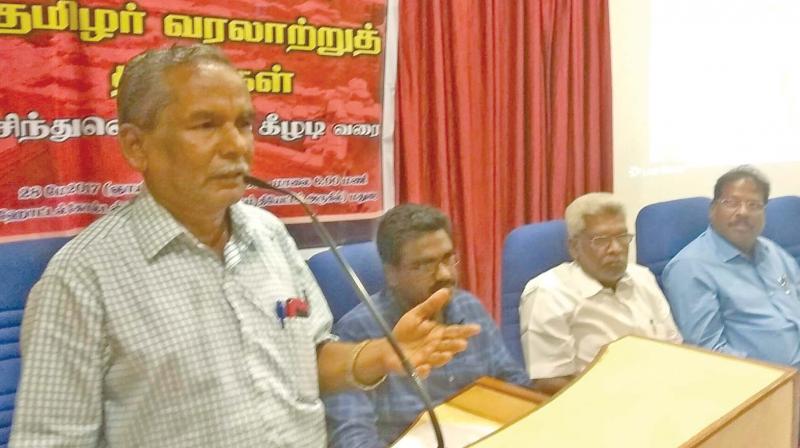Keezhadi finds may point to ravaged city of Manalur: Santhalingam

Madurai: Are the remnants of an old civilization unearthed at Keezhadi archaeological site near Madurai speak for the long-lost city of Manalur ravaged by a chieftain of the Pallava Kingdom in 750 CE?
According to renowned archaeologist C Santhalingam, a Tamil inscription found in a Siva temple at Senthalai in Thanjavur district revealed that a Pallava Chieftain Perumpiduku Muthuraaya, destroyed Manalur, the present Keezhadi site during 750 CE, which is located 15 kilometers Southwest of Madurai.
The Pallava Chieftain Perumpiduku Muthuraaya ruled a portion of the present Thanjavur district from Senthalai between 750 CE and 840 CE. The Chola King Vijayalaya defeated him in 846 CE and laid the foundation for Chola kingdom in Tamil Nadu.
"It is a hypothetically arrived based on the inscription because the excavated site at Keezhadi is at the mouth of Manalur tank. As it was an industrial centre from Sangam age, the chieftain might have ravaged the place with the intention to weaken the Pandya kingdom by destroying its industrial potential," said Santhalingam to DC on the sidelines of a conference -'Archaeology: footprints of Tamil History', organised by Karuthu Pattarai here recently.
Santhalingam, also the secretary of 'Pandyanadu Centre for Historical Research', Madurai, said that the excavated exhibits at Keezhadi also throw light on the functioning of industrial units, most probably a dyeing unit in the site. The brick structure wells, drainage system and blow furnaces found in the trenches were the indication for it because textile trade was popular during the Pandya period, he said, adding, that Keezhadi should have been a second capital of the kingdom.
Stating that the reference to Manalur village was also found in the Alagarkovil inscription dated 12-13 CE, the archaeologist said that the inscriptions revealed that Manalur Aanda Naatuvelan worked as officer in late Pandya regime. "I only see Manalur was a historical city,"
Well-known Tamil Novelist Su Venkatesan, while addressing the gathering, said that Keezhadi excavation is a significant one because it demonstrated to the world for the first time about the Vaigai Civilization.
The site identification survey conducted along the Vaigai River by K Amarnath Ramakrisha, the superintending archaeologist, ASI (who conducted the first two phase of excavation before being transferred to Chennai recently) before they selected Keezhadi for excavation was very important because it brought to light the existence of 560 historical cities from the Moola Vaigai- the source of Vaigai river originates at Varusanadu hills - to Azhankulam, the place where the river ends in Ramanathapuram district, he said.

